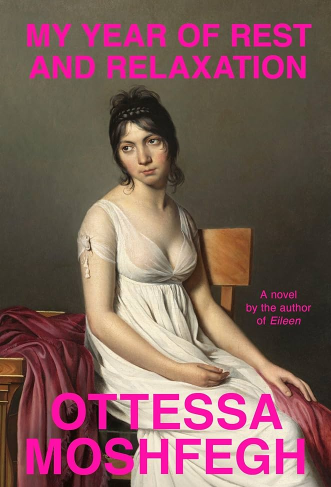Ottessa Moshfegh’s “My Year of Rest and Relaxation” is a darkly satirical novel centered on an unnamed narrator who embarks on an extreme journey of self-induced hibernation. Rich, disaffected, and disconnected from reality, the narrator begins her experiment in mid-June 2000, using a mix of prescription pills to sleep away a year of her life.
The narrator’s detachment is evident as she remains indifferent to major events happening in New York City, reflecting her complete disengagement from the world around her. Her wealth and privilege are portrayed as sources of existential emptiness, reinforcing the idea that material success does not guarantee fulfillment.
Her only friend, Riva, embodies the superficiality the narrator has grown weary of, yet she still finds some value in Riva’s company. This tension highlights the narrator’s inner conflict between desiring human connection and rejecting it.
Her eccentric therapist, Dr. Tuttle, who appears with a neck brace and a cat, further emphasizes the novel’s critique of self-help culture. Dr. Tuttle’s advice to act on impulse rather than reason mirrors the narrator’s reliance on medication to escape reality.
At the narrator’s job at a Chelsea gallery, she encounters the provocative artist Ping Xi, who adds another layer to the narrative. Ping Xi’s controversial art, including taxidermied dogs, symbolizes the narrator’s quest for a profound transformation.
As the narrator approaches the final stage of her hibernation, she aims to emerge renewed after enduring a high-risk performance art project. In the novel’s conclusion, she reflects on her experiences while sitting in Central Park, which raises questions about whether her extreme measures led to genuine personal growth.
“My Year of Rest and Relaxation” offers a scathing look at privilege and detachment, blending dark humor with a critique of modern life’s emptiness. Moshfegh’s incisive writing challenges readers to consider the true cost of seeking escape and transformation.




